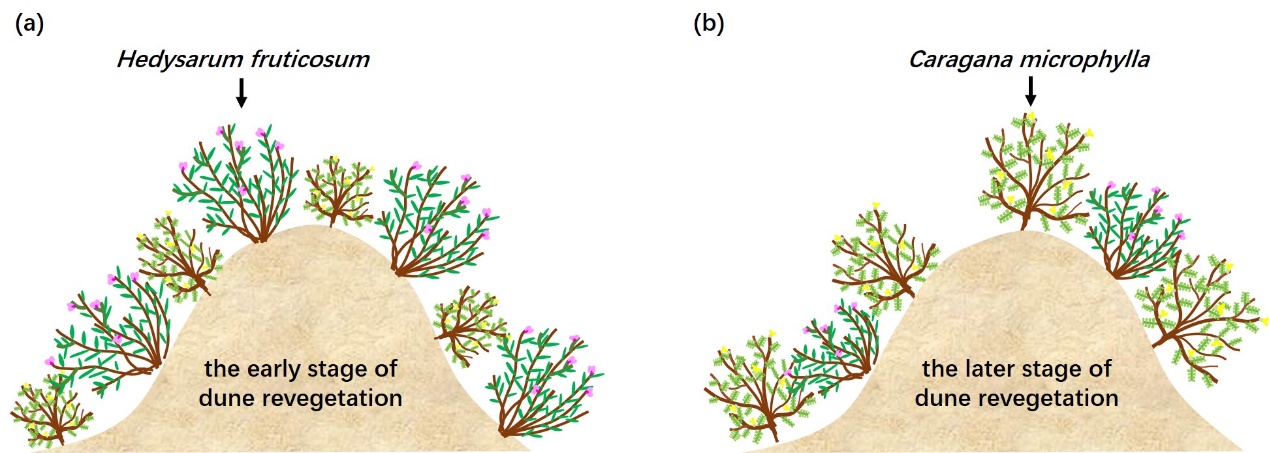
Desertification is a significant ecological and environmental problem worldwide. China is one of the countries affected by long-term and large-scale land desertification, particularly in water-limited regions in the northern part of the country.
Establishing fast-growing shrub plantings on active sand dunes is one of the main and effective measures for rapid sand dune fixation. Different sand-fixing shrub species have different growth performance and dominant positions at different stages of dune fixation (Fig. 1). However, the detailed information underlying physiological differences is unclear.
Researchers from the Institute of Applied Ecology (IAE) of the Chinese Academy of Sciences and the National Council of Science and Technology of Argentina worked at Horqin Sandy Land to investigate the physiological characteristics in terms of xylem hydraulics and water use strategies of two important sand-fixing shrub species, i.e. Hedysarum fruitcosum and Caragana microphylla.
The results indicated that the two shrub species commonly used in combination for sand dune fixation in Horqin Sandy Land have contrasting ecophysiology with respect of water transport and use.
H. fruticosum showed an 'acquisitive' water use strategy with greater hydraulic efficiency and carbon assimilation capability that would support potentially fast growth when water availability is relatively high, which would make it quickly gain dominance at the early stage of dune fixation.
In contrast, C. microphylla showed a more 'conservative' water use strategy with enhanced resistance to drought-induced embolism and greater drought tolerance, which enabled it to take over the dominant position at the later stage of dune stabilization.
These findings provide an important underlying mechanistic explanation for the clear switching of dominant positions between the two shrub species during the dune revegetation process.
The study, published in Land Degradation & Development, was supported by the National Natural Science Foundation of China, the CAS President’s International Fellowship Initiative (PIFI) and the Liaoning Revitalization Talents Program.

Fig.1 A schematic diagram showing the switching of dominant positions between Hedysarum fruitcosum and Caragana microphylla during the sand dune revegetation process. (Image by IAE)

86-10-68597521 (day)
86-10-68597289 (night)

86-10-68511095 (day)
86-10-68512458 (night)

cas_en@cas.cn

52 Sanlihe Rd., Xicheng District,
Beijing, China (100864)

